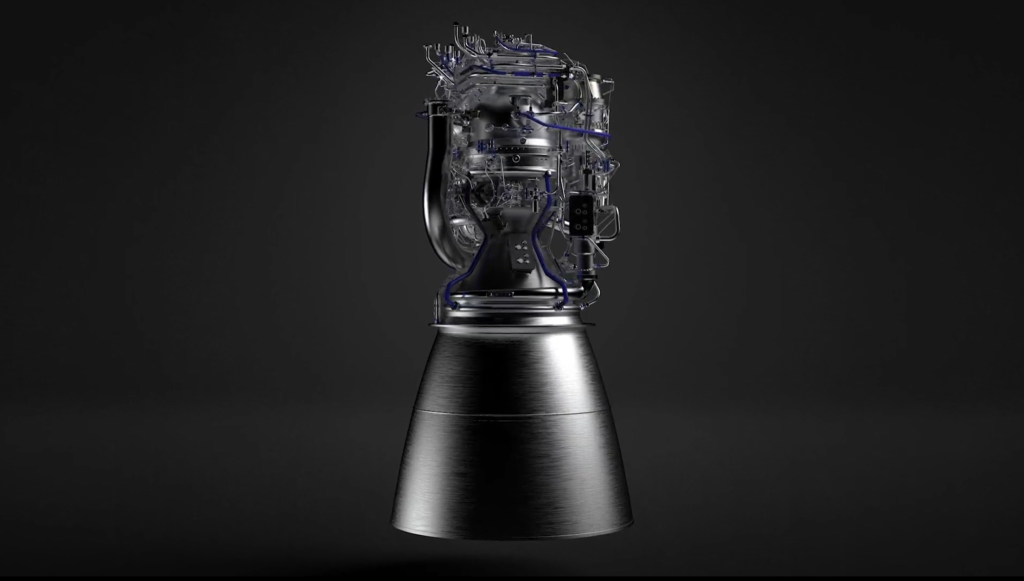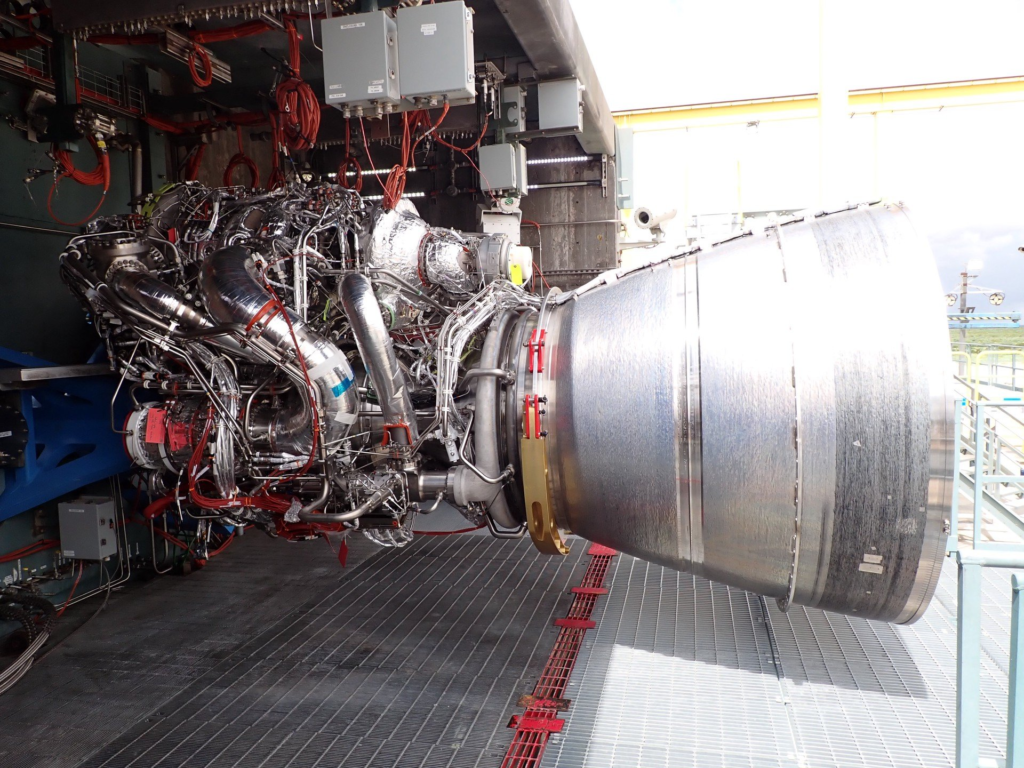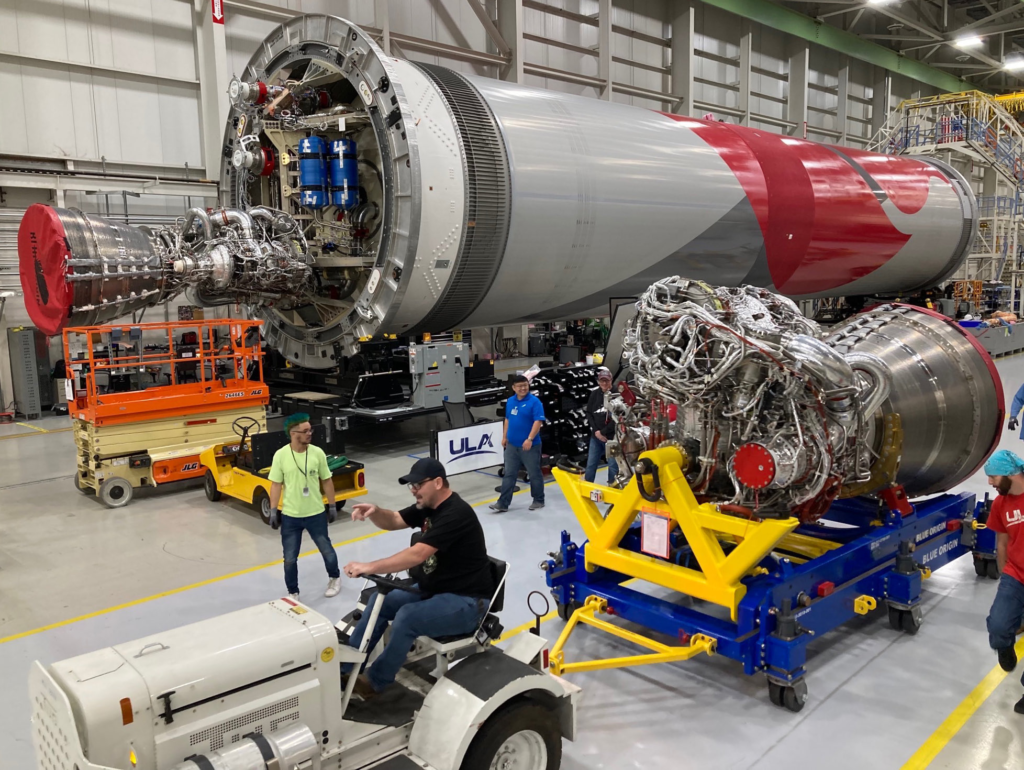
Production of Blue Origin’s BE-4 Engine Is Ramping Up
A rocket engine is both an immensely complex and important component within the space industry. New engines being developed such as BE-4 are trying to use unique propellants, provide greater power, and simplify engine reuse, just to name a few. While Blue Origin has had some issues over time with this specific engine including delays and various setbacks, they are starting to make significant progress.
Just yesterday they released a new update on BE-4 with more details regarding its application to the New Glenn launch system and engine production. Not to mention, more info from Tory Bruno, the CEO of United Launch Alliance which has a major contract relating to the BE-4. All of which paints a promising picture for the future of not only this engine, but the multiple next generation launch vehicles that rely on it.
Over one decade ago in 2011, Blue Origin began work on the BE-4 engine. While it has taken quite a while and there is still a lot of work ahead of the company, if successful, this engine could play a major role in the future of accessing space. Here I will go more in-depth into yesterday’s announcement, other recent BE-4 updates, what to expect in the future, and more.
BE-4 Update

Starting just yesterday Blue Origin tweeted saying, “This is the BE-4 engine.” More importantly, this included a new video that gave a few hints into what progress has been made. Specifically, by now, Blue Origin has completed all of its pre qualification testing and has moved into engine production. They also said that one of their next steps will be to configure BE-4 for the New Glenn launch system. Not only this, but they also are starting to try and get rate production up in order to support the future needs of this launch system.
As of right now, and in the foreseeable future, Blue Origin needs enough BE-4 engines for both the New Glenn and Vulcan launch system. While Vulcan only uses two on the first stage, New Glenn uses 7. With quite the aggressive launch schedule, despite reuse opportunities, Blue Origin will need to be producing these engines at an extremely fast pace in order to keep up with the demand. This is exactly what they are starting to do now. In addition, on December 1st Tory Bruno replied to a tweet and said, “Probably. @blueorigin has made BE4 engine testing pretty routine. Hot firings every week…” This also connects to yesterday’s update as well as providing further testing information.
Blue Origin manufactures its BE-4 engines in Kent Washington, and tests them in West Texas. However, back in 2019, officials from NASA and Blue Origin signed an agreement that granted the company use of a historic test stand as the agency focuses on returning to the Moon and on to Mars. Since then, under a Commercial Space Launch Act agreement, Blue Origin has been upgrading and refurbishing Test Stand 4670, at NASA’s Marshall Space Flight Center in Huntsville, Alabama, to support testing of their BE-3U and BE-4 rocket engines. Yesterday’s update highlighted that work on this site is coming to a close and soon the company will have another test location. This will help ensure space for various testing as they try to push BE-4 to its limits and prepare it for launch.
This leads us to the final update which has to do with Vulcan. Recently we watched the two first flight ready BE-4 engines delivered and installed on ULA’s Vulcan Centaur. Once at the Cape, Vulcan will undergo a final series of tests to verify its readiness for flight consisting of multiple tanking tests and a wet dress rehearsal, culminating in flight readiness firing still targeted for December, which will be the final step prior to launch. Following the successful final testing, Astrobotic and the other payloads will be installed on the launch vehicle. Next, we will watch as Vulcan lifts off with two BE-4 engines for the first time ever. This is practically guaranteed to provide a lot of invaluable information for Blue Origin on this engine and how it performs in flight.
BE-4 Application

Now that we know more about BE-4s recent updates and progress, we can take a closer look at the engine itself and some of its important applications. Yesterday’s update from Blue Origin not only provided some new information but also stressed the importance of reuse as a quality of this engine. Blue Origin highlights that operationally reusable rockets demand high performance engines capable of deep throttling for soft landings. Built for multiple uses, their family of engines is hoping to power the next generation of rockets for commercial, civil, national security, and human spaceflight. BE-4 is one of the most powerful liquefied natural gas (LNG) fueled rocket engines ever developed. Using an oxygen-rich staged combustion cycle, BE-4 is capable of producing 2,400 kN (550,000 lbf) thrust with deep throttle capability.
Another important quality that has to do with reusability is the propellant choice. The company makes it clear that they chose LNG because it is highly efficient, low cost, and widely available. Unlike kerosene, LNG can be used to self-pressurize its tank. Known as autogenous repressurization, this eliminates the need for costly and complex systems. LNG also possesses clean combustion characteristics even at low throttle, simplifying engine reuse compared to kerosene fuels. BE-4 was designed from the beginning to be a medium-performing version of a high-performance architecture. It’s a conscious design choice made to lower development risk while attempting to meet performance, schedule, and reusability requirements.
In terms of the engine’s application, back in late 2014, Blue Origin signed an agreement with United Launch Alliance to co-develop the BE-4 engine and to commit to use the new engine on the Vulcan launch vehicle, a successor to the Atlas V, which would replace the Russian-made RD-180 engine. The ULA partnership announcement came after months of uncertainty about the future of the Russian RD-180 engine that has been used in the ULA Atlas V rocket for over a decade. Geopolitical concerns had come about that created serious concerns about the reliability and consistency of the supply chain for the procurement of the Russian engine. Initially, ULA expected the first flight of the new launch vehicle no earlier than 2019 but by 2018, that target had moved out to 2021. Now in late 2022, we can expect to see Vulcan lift off in early 2023.
Vulcan utilizes two BE-4 engines on the first stage for the majority of its thrust. The rocket also integrates up to six Northrop Grumman Graphite Epoxy Motor (GEM) 63XL Solid Rocket Boosters (SRBs). They are constructed out of a graphite-epoxy composite with the throttle profile designed into the propellant grain. GEM solids supported the Delta II and Delta IV rockets, and the GEM 63 variant will fly on ULA’s Atlas V rocket prior to the first Vulcan launch. Towards the top, Vulcan will rely on two RL10C engines to power its second stage. Logging an impressive record of nearly 400 successful flights and nearly 700 firings in space, RL10 engines, manufactured by Aerojet Rocketdyne, harness the power of high-energy liquid hydrogen. Altogether, this creates the propulsion for this next generation rocket.
The other primary application is Blue Origin’s own next generation rocket, New Glenn. The New Glenn architecture is a high-performance space launch system designed to meet requirements for fault tolerance, safety, and reusability – all consistent with providing a reliable space transportation capability. Blue Origin has designed New Glenn from the beginning as a robust system to launch customers to low Earth orbit (LEO), geostationary transfer orbit (GTO), cislunar space, and beyond. New Glenn offers a single two-stage vehicle configuration for all initial customer missions, enhancing reliability and lowering cost. The first stage booster is designed for full reusability, and is recovered downrange on a sea-going landing platform. The second stage is expendable.
On a typical mission, New Glenn lifts off from Launch Complex 36 at Cape Canaveral. Following stage separation, the first stage flies back to Earth and lands nearly 1,000 km downrange on a platform. While the company initially planned for this to be a large converted cargo ship, the plan now looks to be a drone ship very similar to what SpaceX uses. Next, the second stage engines ignite and the 7-meter fairing separates. The mission is complete when the payload is delivered safely to orbit. New Glenn is working to become a reliable, cost-competitive system with high availability. The 7-meter fairing has two times the payload volume of any existing launch vehicle, which means more room for satellites and the freedom to build in more capacity. New Glenn is also able to launch and land in 95% of weather conditions, making it a reliable option for payload customers. While exciting, one of the most important aspects is the BE-4 engine. Thankfully, recent updates from the company highlight that they are now focusing on producing this engine rapidly.
Conclusion
Blue Origin has been working on the BE-4 engine for over a decade now. During that time there have been many ups and downs within the development and testing program. Thankfully, now in late 2022, not only have the first flight engines been delivered, but they are in the process of increasing production and will soon have another test facility. We will have to wait and see how it progresses and the impact it has on the space industry.
